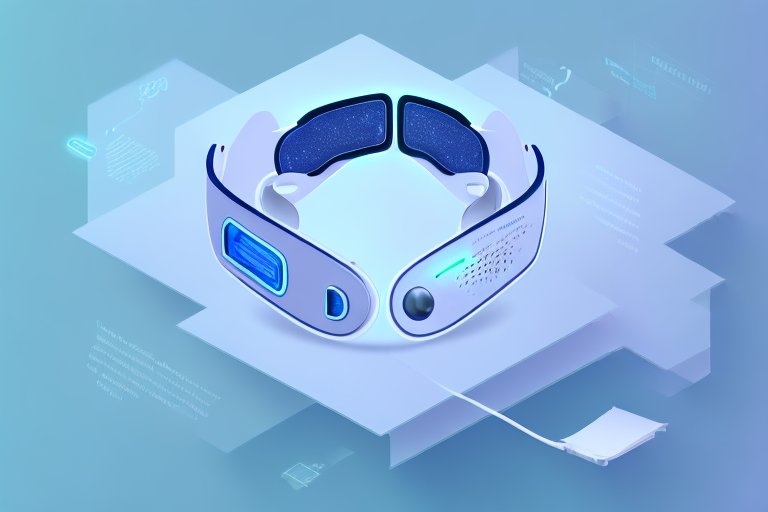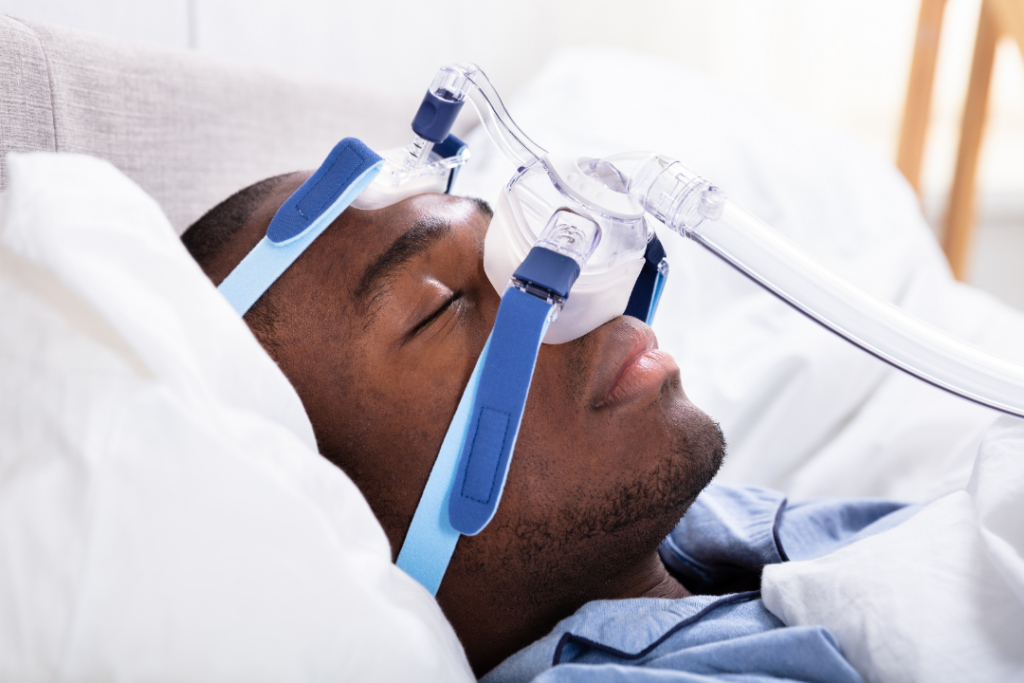Sleep apnea is a prevalent sleep disorder that affects millions of people worldwide. With advancements in modern science, there has been a revolutionary change in the treatment options available for sleep apnea. This article aims to provide an overview of how modern science is transforming sleep apnea treatment and the potential impact it can have on individuals suffering from this condition.
Understanding Sleep Apnea: A Brief Overview
Sleep apnea is a sleep disorder characterized by interrupted breathing during sleep. It occurs when the muscles in the throat fail to keep the airway open, leading to pauses in breathing. These pauses, known as apneas, can last for several seconds and occur multiple times throughout the night.
Sleep apnea is classified into three types: obstructive sleep apnea (OSA), central sleep apnea (CSA), and complex sleep apnea syndrome (CSAS). OSA is the most common type and is caused by a physical blockage of the airway. CSA occurs when the brain fails to send the signals necessary for breathing. CSAS is a combination of both OSA and CSA.

The Impact of Sleep Apnea on Health
Untreated sleep apnea can have significant implications for overall health and well-being. The recurrent interruptions in breathing can lead to daytime sleepiness, fatigue, and lack of concentration. It can also increase the risk of developing other health conditions, such as high blood pressure, heart disease, stroke, and diabetes.
Furthermore, sleep apnea can impact quality of life, relationships, and productivity. The constant interruptions in sleep can disrupt the sleep-wake cycle, leading to irritability, mood swings, and decreased cognitive function.
Traditional Methods of Treating Sleep Apnea
For many years, the primary treatment option for sleep apnea was continuous positive airway pressure (CPAP) therapy. This involves wearing a mask over the nose or mouth, which delivers a continuous flow of air to keep the airway open during sleep. While effective, CPAP therapy can be uncomfortable and challenging to adhere to.
Another traditional treatment option is the use of mandibular advancement devices (MADs). These oral appliances reposition the jaw to prevent the collapse of the airway. However, MADs may not be suitable for everyone and may cause jaw discomfort or changes in bite alignment.
However, in recent years, there have been advancements in the treatment of sleep apnea. One such advancement is the use of positional therapy. This involves using devices or techniques to encourage sleeping in a specific position that helps keep the airway open. For example, some individuals may benefit from using a specialized pillow or wearing a device that vibrates when they sleep on their back, prompting them to shift positions.
Another emerging treatment option is the use of hypoglossal nerve stimulation (HNS). This involves implanting a small device that delivers mild electrical stimulation to the hypoglossal nerve, which controls the movement of the tongue and other muscles involved in breathing. The stimulation helps keep the airway open during sleep, reducing the frequency and severity of apneas.
In addition to these treatment options, lifestyle changes can also play a significant role in managing sleep apnea. Losing weight, avoiding alcohol and sedatives before bedtime, and establishing a regular sleep schedule can all help improve symptoms and reduce the risk of complications.
It is important to note that the effectiveness of each treatment option may vary depending on the individual and the severity of their sleep apnea. Consulting with a healthcare professional is crucial to determine the most suitable treatment approach.
The Intersection of Science and Sleep Apnea
Advancements in science and technology have paved the way for innovative approaches to sleep apnea treatment. These advancements aim to improve treatment efficacy, comfort, and overall patient experience.
Sleep apnea, a common sleep disorder characterized by pauses in breathing during sleep, affects millions of people worldwide. It can lead to a variety of health issues, including daytime fatigue, high blood pressure, and an increased risk of heart disease. However, thanks to the intersection of science and sleep medicine, there have been significant breakthroughs in the diagnosis and treatment of this condition.
The Role of Technological Advancements in Sleep Medicine
Technological advancements have revolutionized sleep medicine, leading to the development of new diagnostic tools and treatment modalities for sleep apnea. Polysomnography, a comprehensive sleep study, has become more accessible, allowing for accurate diagnosis and personalized treatment plans.
Polysomnography involves monitoring various physiological parameters during sleep, such as brain waves, eye movements, and heart rate. This data helps sleep specialists identify the presence and severity of sleep apnea, as well as other sleep disorders. By understanding the underlying causes of sleep apnea, healthcare professionals can tailor treatment options to each individual’s specific needs.
Furthermore, the integration of wearable devices and smartphone applications has enabled individuals to monitor and track their sleep patterns. These devices can measure factors like sleep duration, sleep quality, and even snoring intensity. This data can help healthcare professionals gain insights into a patient’s sleep habits and make informed decisions regarding treatment options.
The Influence of Modern Research on Sleep Apnea Treatment
Ongoing research in the field of sleep medicine has contributed to a deeper understanding of sleep apnea and its underlying causes. This knowledge has led to the development of targeted therapies that address the unique needs of each individual.
Researchers have discovered that sleep apnea can be caused by various factors, including obesity, anatomical abnormalities, and certain medical conditions. By identifying these underlying causes, healthcare professionals can recommend appropriate treatment options that go beyond the traditional use of continuous positive airway pressure (CPAP) machines.
Research has also focused on alternative treatment options for individuals who cannot tolerate or adhere to traditional treatments. This includes exploring the effectiveness of positional therapy, oral exercises, and lifestyle modifications. For example, positional therapy involves encouraging individuals to sleep in specific positions that help keep their airways open, reducing the frequency of apnea episodes.
Additionally, lifestyle modifications such as weight loss, regular exercise, and avoiding alcohol and sedatives before bedtime have shown promising results in managing sleep apnea. These non-invasive approaches can complement other treatment modalities and improve overall treatment outcomes.
In conclusion, the intersection of science and sleep apnea has brought about significant advancements in diagnosis and treatment options. Technological innovations have made sleep studies more accessible, while ongoing research has deepened our understanding of the condition. With these advancements, healthcare professionals can provide personalized and effective treatment plans, improving the quality of life for individuals with sleep apnea.
Innovative Treatment Options for Sleep Apnea
Modern science has paved the way for innovative treatment options that offer alternatives to traditional methods of managing sleep apnea. These advancements aim to improve treatment adherence and enhance patient outcomes.
Sleep apnea is a common sleep disorder characterized by pauses in breathing or shallow breaths during sleep. It can lead to daytime sleepiness, fatigue, and other health complications if left untreated. Fortunately, there are now various non-invasive and surgical treatments available to help individuals with sleep apnea.
Non-Invasive Treatments and Their Effectiveness
Non-invasive treatments, such as oral appliances and nasal devices, have gained popularity in recent years. These devices work by repositioning the jaw or opening up the nasal passages to facilitate unobstructed breathing during sleep.
Oral appliances, also known as mandibular advancement devices, are custom-made mouthpieces that help keep the airway open by pushing the lower jaw forward. They are comfortable to wear and can be easily adjusted to fit each individual’s mouth.
Nasal devices, on the other hand, come in various forms, including nasal strips, nasal dilators, and nasal valves. These devices help improve airflow by widening the nasal passages, reducing resistance, and preventing collapse during sleep.
Studies have shown promising results in the effectiveness of these non-invasive treatments, particularly for individuals with mild to moderate sleep apnea. They provide a more comfortable and convenient option for those who are unable to tolerate continuous positive airway pressure (CPAP) therapy.
In addition to oral appliances and nasal devices, lifestyle modifications such as weight loss, regular exercise, and avoiding alcohol and sedatives can also help improve sleep apnea symptoms.
Surgical Innovations in Sleep Apnea Treatment
Advancements in surgical techniques have expanded the options for individuals with severe sleep apnea or those who do not respond to other treatment modalities. Surgical interventions aim to improve airway stability and reduce the risk of apneas during sleep.
Must Read:
- How Modern Science is Revolutionizing Sleep Apnea Treatment Options
- Understanding the Different Types of Sleep Apnea and Their Implications
- Upgrades and Enhancements: What’s New in ResMed Mask Technology
- ResMed Mask Fitting: Ensuring a Secure and Leak-Free Sleep Therapy
Uvulopalatopharyngoplasty (UPPP) is a surgical procedure that involves removing excess tissue from the throat, including the uvula, tonsils, and part of the soft palate. This procedure helps widen the airway and reduce obstruction, leading to improved breathing during sleep.
Maxillomandibular advancement (MMA) is another surgical option that involves repositioning the upper and lower jaws to increase the size of the airway. By moving the jaws forward, the space at the back of the throat is enlarged, reducing the likelihood of airway collapse during sleep.
Hypoglossal nerve stimulation is a relatively new surgical treatment that involves implanting a device that stimulates the hypoglossal nerve, which controls the movement of the tongue. By stimulating the nerve during sleep, the tongue is kept in a forward position, preventing it from blocking the airway.
These surgical innovations have shown promising results in improving airway function and reducing sleep apnea symptoms. However, they are typically reserved for individuals with severe sleep apnea or those who have not responded well to non-invasive treatments.
In conclusion, innovative treatment options for sleep apnea have revolutionized the way this sleep disorder is managed. Non-invasive treatments, such as oral appliances and nasal devices, offer a comfortable and convenient alternative to CPAP therapy. Surgical interventions, such as UPPP, MMA, and hypoglossal nerve stimulation, provide options for individuals with severe sleep apnea or those who do not respond to other treatments. With these advancements, individuals with sleep apnea now have a range of options to improve their quality of sleep and overall well-being.
The Future of Sleep Apnea Treatment
The future of sleep apnea treatment holds great potential for further advancements and individualized approaches. Researchers and medical professionals are continually exploring new avenues to enhance treatment outcomes and improve the lives of individuals with sleep apnea.
Predicted Developments in Sleep Apnea Therapy
As technology continues to advance, there is a growing interest in the use of personalized medicine for sleep apnea treatment. By analyzing an individual’s unique genetic and physiological characteristics, healthcare professionals may be able to tailor treatment plans to optimize effectiveness and minimize side effects.
Additionally, the integration of telemedicine and remote monitoring systems may enhance access to care and allow for real-time adjustments to treatment plans. This can help individuals receive timely support and guidance, improving treatment adherence and overall outcomes.
The Potential of Personalized Medicine in Treating Sleep Apnea
Personalized medicine holds much promise in the field of sleep apnea. Through the use of genetic testing, imaging techniques, and detailed patient profiling, healthcare professionals can identify the most effective treatment options for each individual.
This individualized approach can revolutionize sleep apnea treatment by minimizing trial-and-error and optimizing treatment outcomes. By addressing the unique factors contributing to an individual’s sleep apnea, personalized medicine may offer highly effective and targeted treatments.In conclusion, modern science is revolutionizing sleep apnea treatment options. With advancements in technology, research, and personalized medicine, individuals with sleep apnea now have a wider range of effective and innovative treatment choices to improve their quality of life. As ongoing research and development continue, the future holds great promise for further advancements in sleep apnea therapy. It is an exciting time for both clinicians and individuals affected by sleep apnea as science continues to shape the future of sleep medicine.

